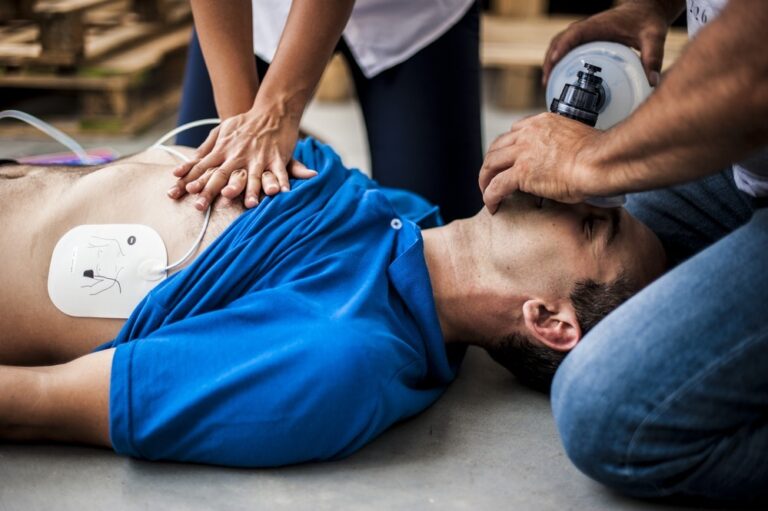CPR Techniques

CPR Techniques: A Lifesaving Skill Everyone Should Know
CPR Techniques, Cardiopulmonary Resuscitation is an essential emergency procedure that can save lives. When someone experiences cardiac arrest, their heart stops beating effectively, cutting off oxygenated blood to the brain and vital organs. CPR is designed to temporarily restore blood circulation and oxygen delivery, giving the victim a fighting chance until professional medical help arrives.
Why Learn CPR?
According to the American Heart Association (AHA), nearly 475,000 Americans die from cardiac arrest each year. Immediate CPR can double or triple the chances of survival. Knowing CPR equips individuals to act quickly and confidently in critical moments, potentially saving a friend, family member, or even a stranger.
The Basics of CPR
CPR involves two main components:
- Chest Compressions: These mimic the heart’s pumping action to maintain blood flow.
- Rescue Breaths: These provide oxygen to the victim’s lungs (optional in hands-only CPR).
When to Perform CPR
- The victim is unresponsive and not breathing, or only gasping (agonal breathing).
- No pulse is detected within 10 seconds (for trained individuals).
Step-by-Step CPR for Adults
1. Check Responsiveness
- Tap the victim and shout, “Are you okay?”
- If no response, call 911 immediately or instruct someone else to do so.
2. Position the Victim
- Place them on their back on a firm, flat surface.
3. Begin Chest Compressions
- Place the heel of one hand in the center of the chest, between the nipples. Place your other hand on top, interlocking your fingers.
- Push hard and fast, compressing the chest at least 2 inches deep at a rate of 100–120 compressions per minute.
- Allow the chest to fully recoil between compressions.
4. Provide Rescue Breaths (If Trained)
- Tilt the victim’s head back slightly and lift the chin to open the airway.
- Pinch their nose shut, cover their mouth with yours, and deliver a breath lasting about 1 second. Watch for the chest to rise.
- Give two breaths, then resume compressions.
5. Continue CPR
- Repeat cycles of 30 compressions and 2 breaths until emergency responders arrive, an automated external defibrillator (AED) is available, or the victim shows signs of life.
Hands-Only CPR
For untrained bystanders, hands-only CPR is recommended. Skip the rescue breaths and focus solely on chest compressions at the correct rate and depth.
CPR for Children and Infants
Children and infants require modified techniques due to their smaller size:
- Use one hand for compressions on children (ages 1–8).
- For infants, use two fingers placed just below the nipple line.
- Compressions should be about 1.5 inches deep for infants and 2 inches for children.
Using an AED
An AED is a portable device that can analyze the heart’s rhythm and deliver an electric shock if needed. Many public places have AEDs available:
- Turn on the AED and follow the voice prompts.
- Attach electrode pads to the victim’s bare chest as instructed.
- Allow the AED to analyze the rhythm and deliver a shock if advised. Resume CPR immediately after the shock.
Tips for Effective CPR
- Practice Proper Form: Use your body weight rather than your arms to reduce fatigue.
- Minimize Interruptions: Limit pauses in compressions to under 10 seconds.
- Stay Calm: Take deep breaths and focus on maintaining the correct rhythm.
Get Certified
While learning the basics of CPR is vital, formal training provides hands-on experience and prepares you for various scenarios. Organizations like the American Red Cross and AHA offer certification courses both in-person and online.
Conclusion
CPR Techniques, is a critical skill that can make the difference between life and death. By learning and practicing these techniques, you can become a first responder in emergencies, giving victims a chance at survival. Whether it’s a family member or a stranger, your actions can be the ultimate lifesaving gift.
